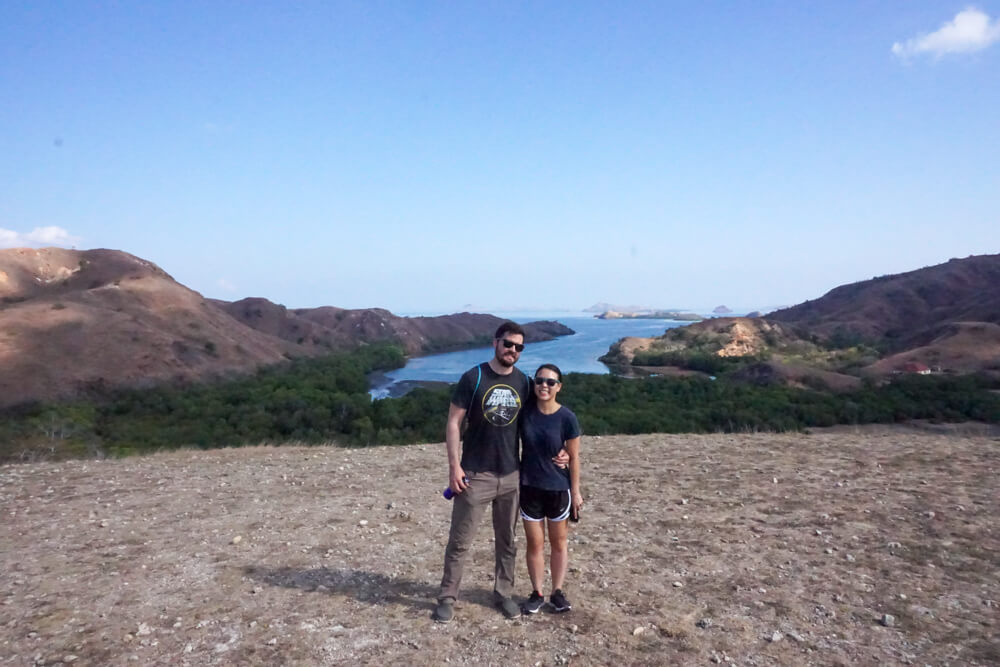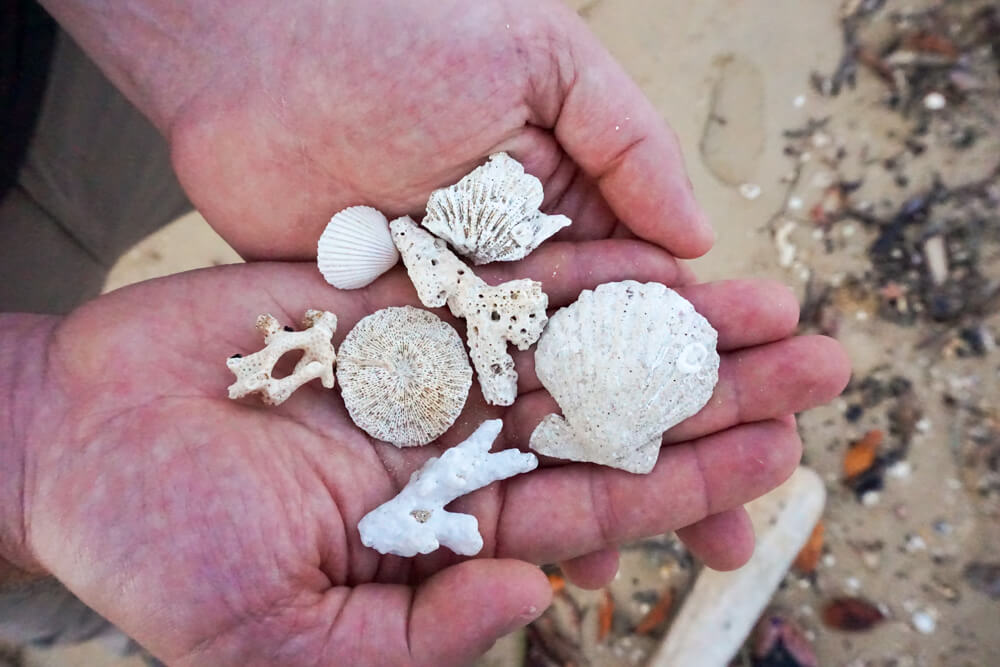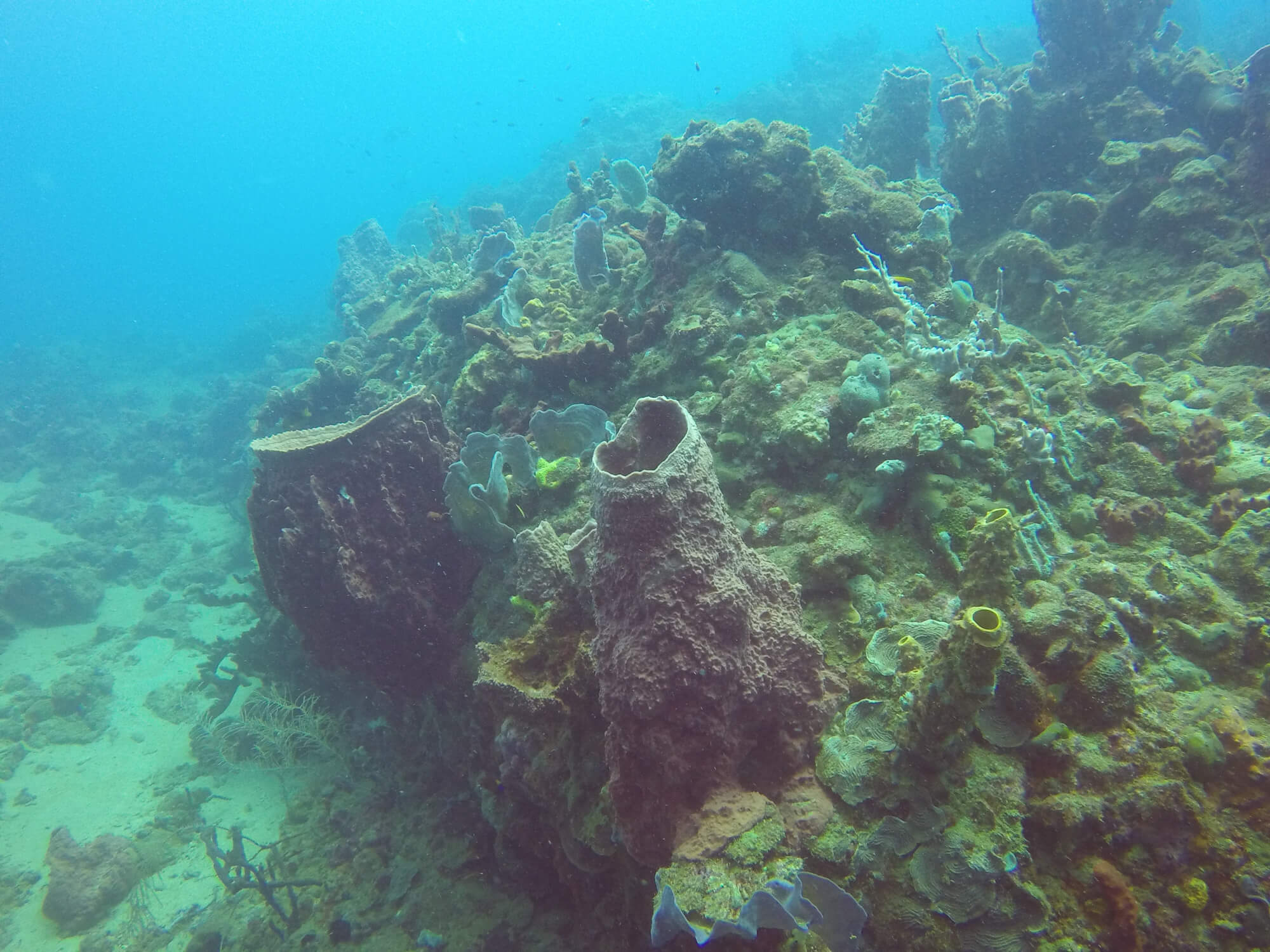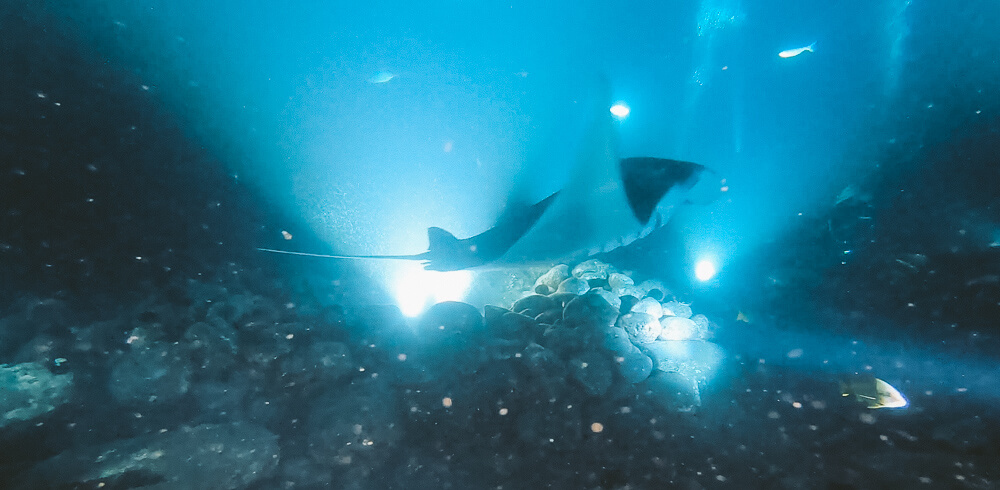Diving was our primary reason for picking Indonesia for our honeymoon. No surprise there! We usually prioritize diving for our vacations. In this post, I’ll tell you all about our experience and give you more recommendations about diving in Indonesia.
If you are a diver and want an incredible diving experience, you have to visit Indonesia! With over 17,000 islands, Indonesia’s biodiversity is out of this world. Thousands of wildlife, from gigantic manta rays to the smallest slugs, are waiting for you!
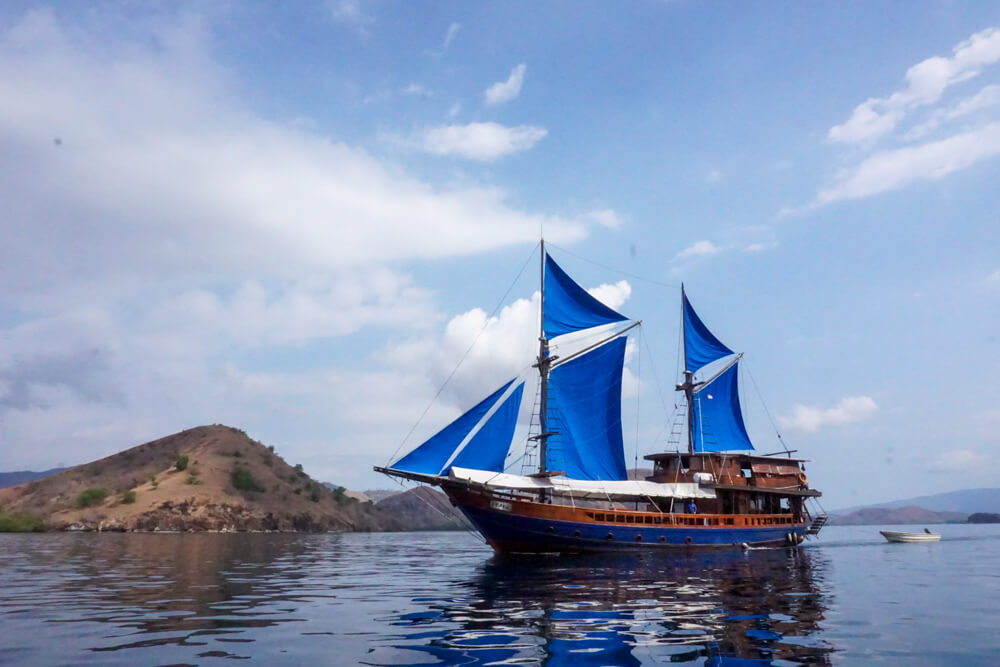
On-Board Our Indonesia Liveaboard – Moana
Diving in Indonesia and our Moana Liveaboard were highlights of our trip! We knew a liveaboard would be the best option for diving in Indonesia and we picked Komodo Island because of the proximity (shorter and less expensive flight) from Bali. The last criteria in choosing our boat were the quality of the boat and the presence of sails. (We later found out that most of the time, sails are simply for show and the classification and/or tax break boats can get if they have sails. That’s why you’ll see boats with unusable sails just for show.)
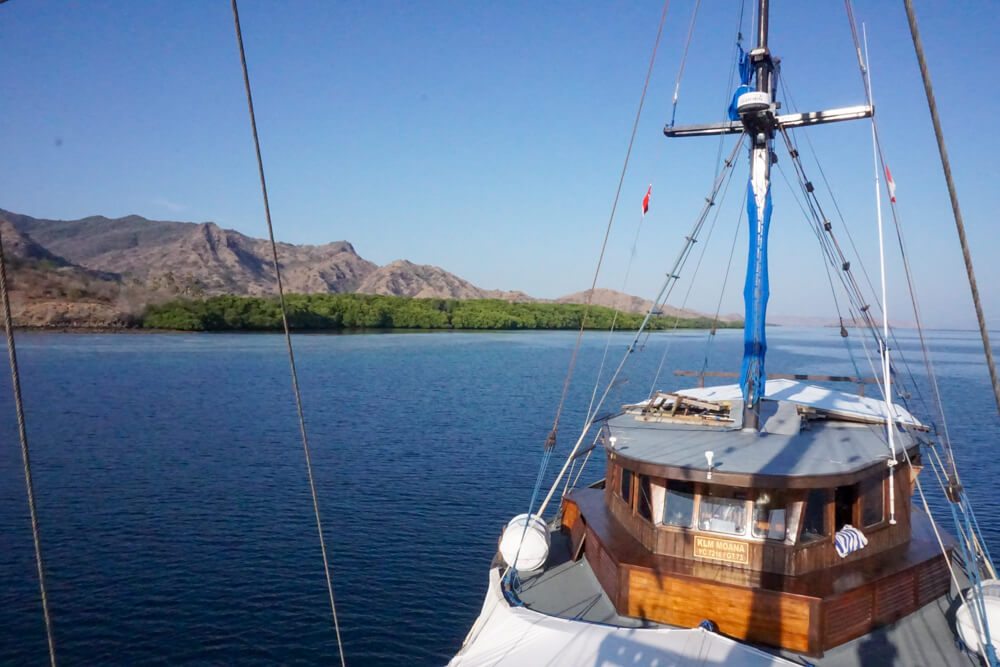
We spent five nights on Moana. The boat is in prime condition and they maintain and upgrade the ship every year for two months. We spent most of our time on the front, open-air deck where we ate, napped, relaxed, and did our dive briefings. The backside is where we stored our dive equipment and got in and out of our dive boats. Our boat had five cabins underneath the deck with room for 10 guests.
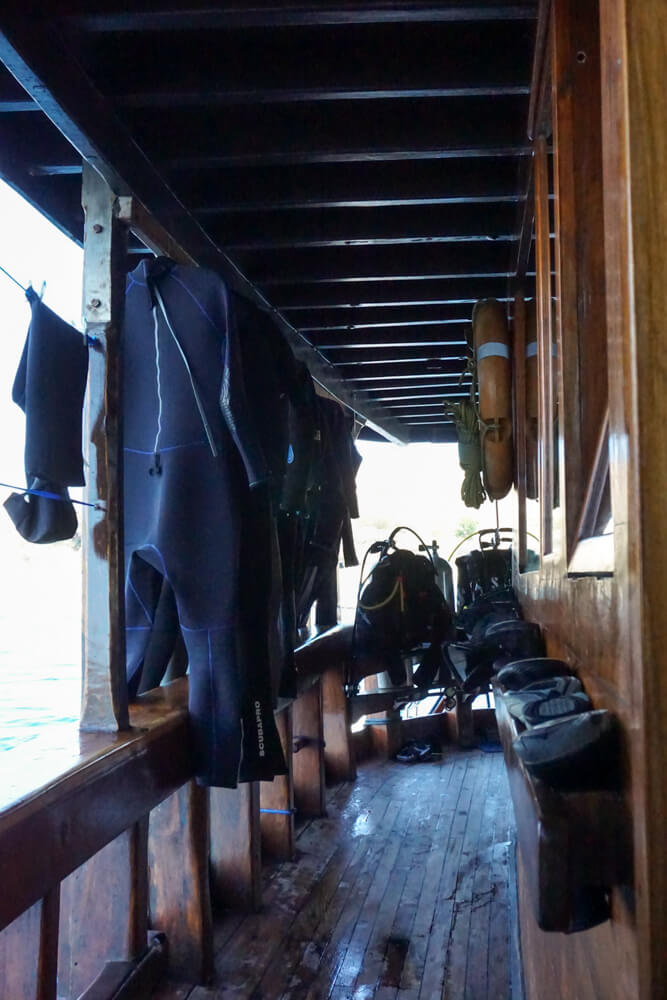
The 12-person dive team and boat crew were excellent! They do everything from driving the boats to cooking and serving our meals. We were divided into three dive teams, so we were well taken care of underwater. On a liveaboard, it is all about diving! There are usually four opportunities to dive in a day, usually, around 7 am, 10 am, 3 pm, and 6 pm. Our dive group was led by Rudi, who made sure I didn’t get pushed away from the current (thank goodness) and always pointed out the little creatures!
The guests on our boat were from the U.S., Canada, Germany, and Romania. The funny thing about our group was that there were three people named Will! Here’s our group photo with the crew.
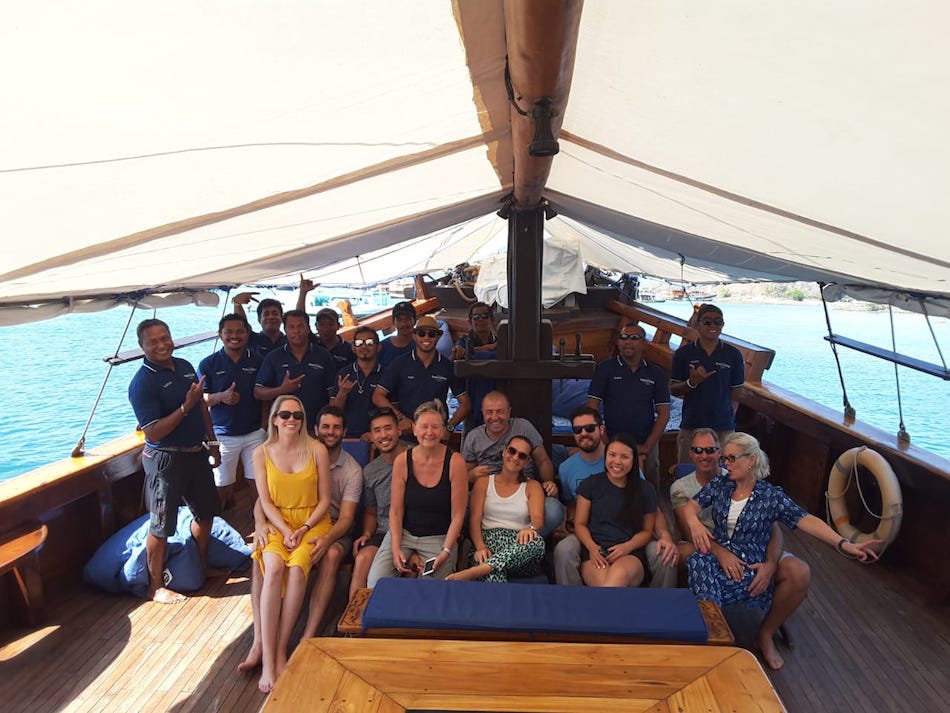
After our dives, we usually change out of our swimsuits and have breakfast, lunch, snack, and dinner, respectively. The food was great! For breakfast, the crew set out a buffet while lunch and dinner were plated meals. The chef goes to training every year, so not only is the food delicious, but he serves Indonesian and international cuisine to give guests and the crew a variety.





When we weren’t diving or sleeping, we took naps, swam, read, or filled in our dive logs. It’s always fun looking through the fish identification books and talking to other guests about what they saw on the last dive. What we see underwater typically differs since fish don’t usually stay still, so it’s always a joy and bummer when we talk about what we saw and missed. Our conversations are a lot of “did you see that” and “what was that one fish.”




What You’ll See Diving in Indonesia
The wildlife list is incredibly vast in Indonesia. Be ready for over 3,000 types! For big species, look for manta rays, mola mola, and sharks. For small species, nudibranchs are my favorite! I also saw jellyfish, cuttlefish, longhorn cowfish, mantis shrimp, and so many types of starfish, including a chocolate chip starfish. Several dives had thousands of fish swimming around us and it truly felt like we were in an aquarium.









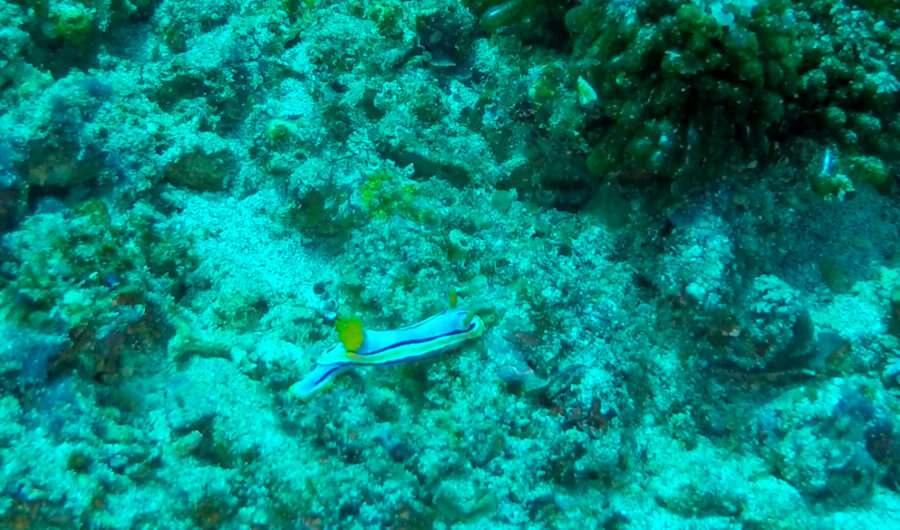
On several dives, we saw what we greatly anticipated seeing – manta rays! We estimate the largest one was about 12 feet! They swim against the current and stay in one spot so that their food comes to them. Because it’s usually in high current, we had to hook onto hard coral and rocks to keep from drifting away. This made it some of the toughest diving we’ve done because it takes a lot of energy to swim against the current. But watching these huge creatures was amazing!

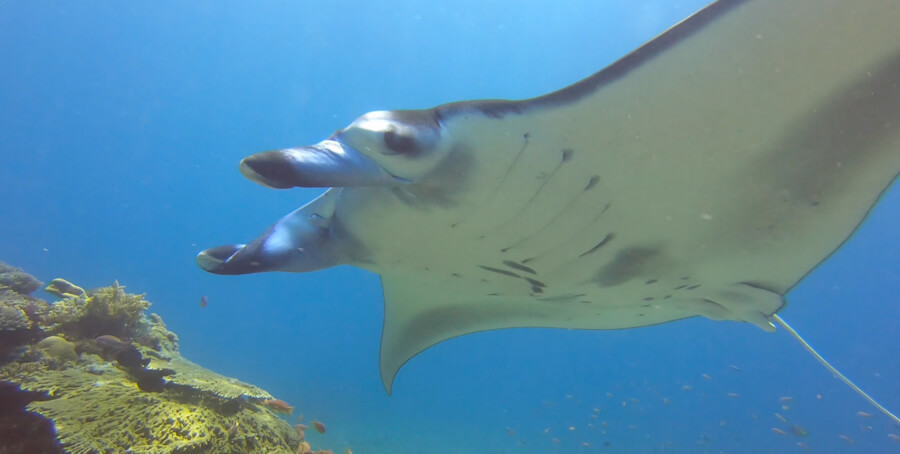
We also saw some of the tiniest wildlife – pygmy seahorses and nudibranchs. I’ve seen a few nudibranchs before this, but that number shot up with every dive. These sea slugs come in all different colors and were fun to spot. We had a hard time photographing them without a macro lens. They’re usually half the length of your palm.


Pygmy seahorses are also hard to find because they’re about the size of a fingernail, but they are typically on sea fans. Look at a sea fan and try to spot an irregularity and it’s likely a camouflaged pygmy seahorse. It’s hard to spot below (especially hard to photograph without a macro lens), but it’s the light white spot in the middle third and lower half of the photograph.
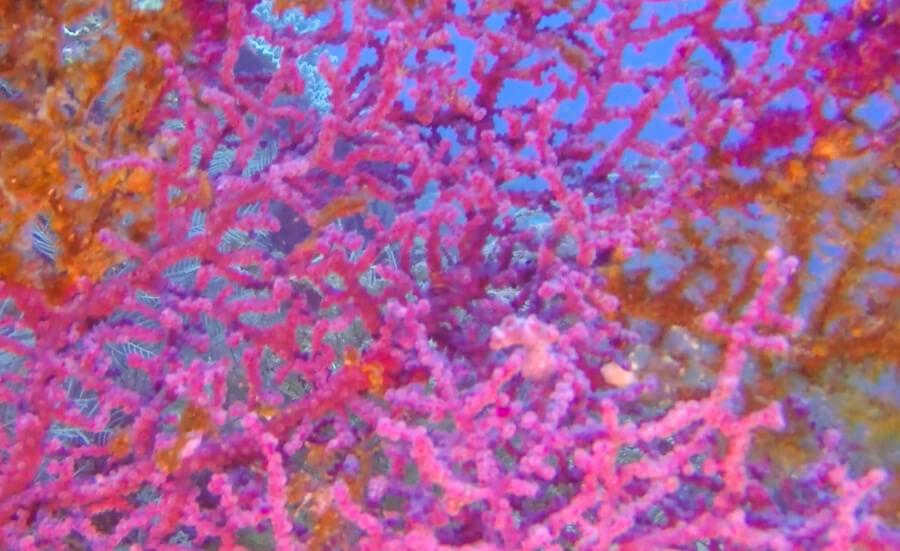
Day Excursion – Komodo National Park
We also saw some unique wildlife above water. If you’re diving around Komodo National Park, you’ll likely make a visit to Komodo Island or Rinca Island to see the komodo dragons in the wild! We took a short walk to see these giant lizards. Can you believe males get up to nine feet and 200 lbs? Yes, they are poisonous! We walked around the park in a straight line with a ranger in the front and back. We also saw a water buffalo in the far distance!
If you’re in Komodo National Park, Padar Island is a popular spot to stop for the views and beaches.
Indonesia Diving Guide: Where and When to Dive in Indonesia
Have I convinced you that Indonesia is one of the best places to dive in the world? If you want more options, here is a guide to diving in Indonesia.
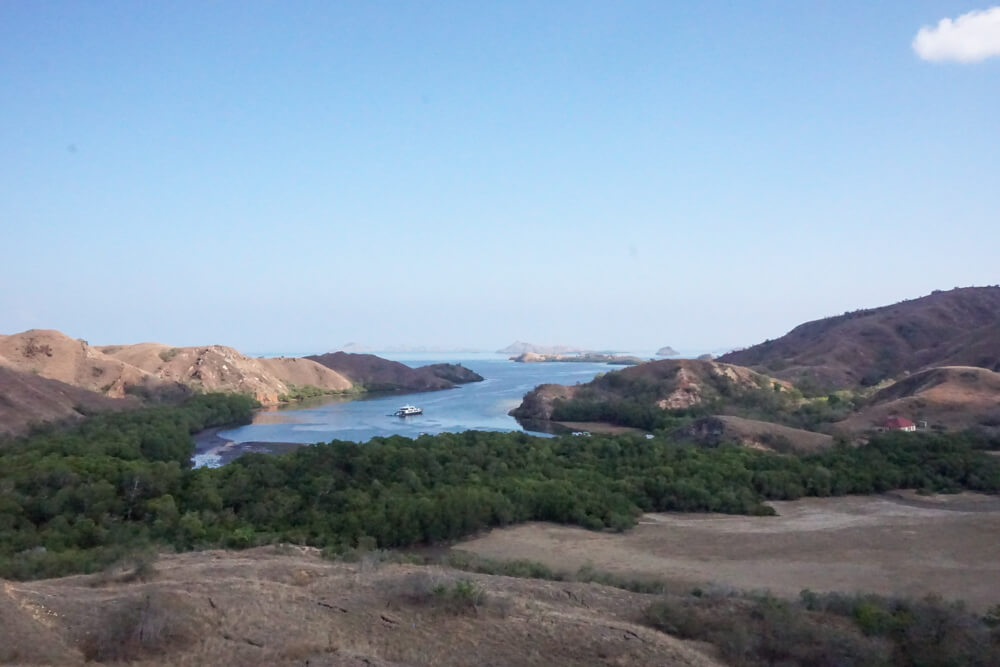
When to Dive in Indonesia
You can dive year-round in Indonesia, but visibility varies. The rainy season is November to March and the dry season is April to October. The season also varies depending on what part of Indonesia you are diving. The water is about 26-30 degrees Celsius year-round, so a 5mm wetsuit is recommended. It was the thickest wetsuit we’ve ever worn and annoying to get on and off but it was very necessary!
How Much is Diving in Indonesia
We dove with two reputable companies in Indonesia. Our five-day liveaboard was about $2,000 USD per person plus equipment rental costs. Compared to our other liveaboard experiences in Thailand and Egypt, Indonesia was more expensive. Our day dives on Nusa Penida were about $45 USD per dive per person including equipment rental. This price is close to the average.
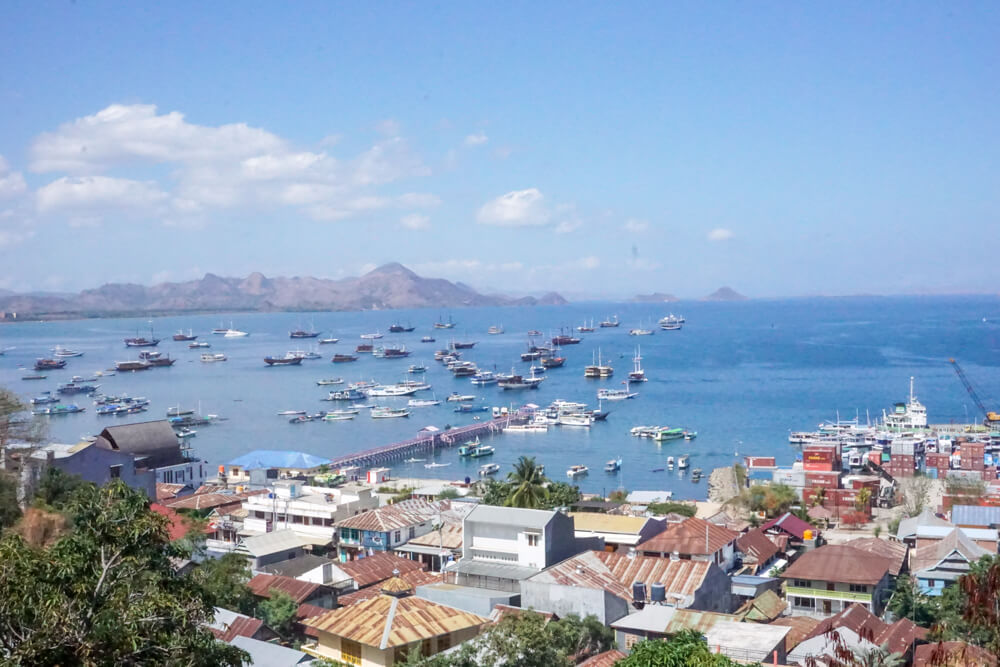
Where to Dive in Indonesia
Some areas and liveaboards are not recommended for beginner divers. Currents can change quickly and some dives are in the current. These currents are no joke, and sticks and hooks are needed to keep from being swept away.
It’s best to dive Komodo National Park and Raja Ampat by liveaboard because of the distance from shore. Although liveaboards are a pricier option, you get many dives into your trip. If you want a less expensive option, look for a dive resort in these areas. The downside is you’re limited by how far a dive site is located, meaning you may need to do fewer dives and you’ll spend more time on a fast boat to get there.
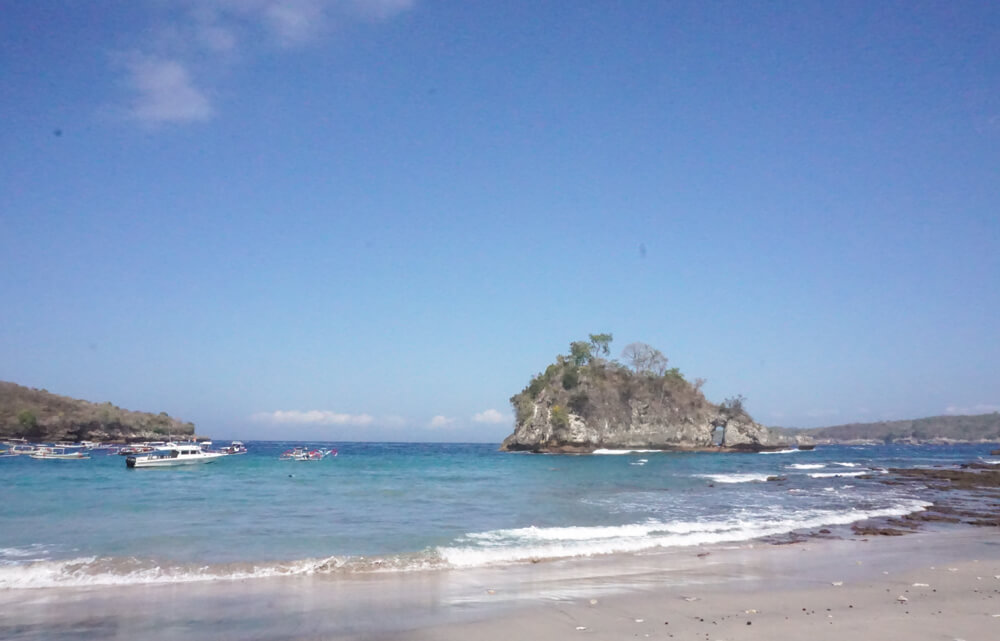
In addition to Komodo, we also dove three times in Nusa Penida with Blue Corner Dive. Although we saw manta rays, we did not enjoy the experience because it was bad visibility, there were way too many people, and we didn’t really like the dive guides. But I’ve heard plenty of accounts where the diving in Nusa Penida is fantastic. This is the place to see mola molas.
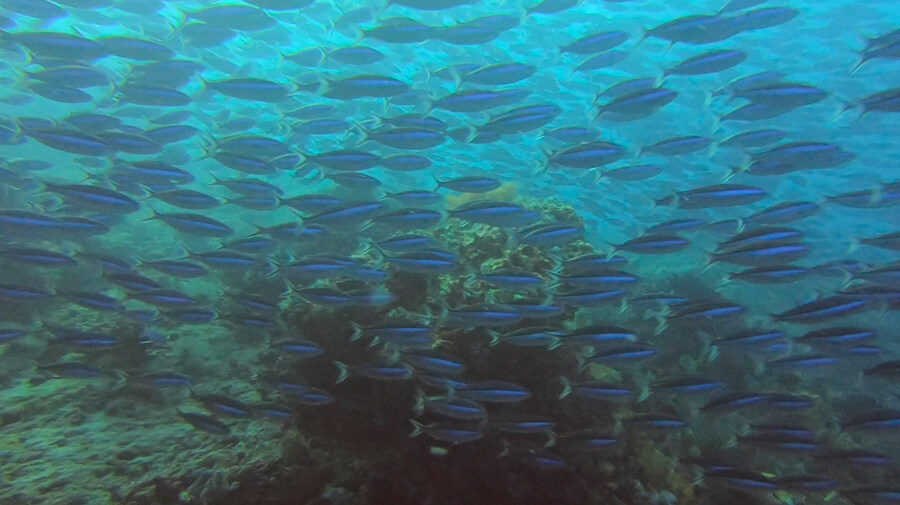
Below are the details and recommendations for each area.
- Raja Ampat near Papua (Eastern Indonesia)
- Best by liveaboard and they are usually 5-14 nights
- Diving typically October through April
- Beware strong currents
- Liveaboards depart from the port of Sorong
- Komodo National Park of Flores (South Central Indonesia)
- Best by liveaboard and they are usually 6-12 nights
- Diving typically April through November
- Beware strong currents
- Liveaboards depart from the port of Labuan Bajo
- Sulawesi (North Central Indonesia)
- Most popular diving areas on this island include Manado/Bunaken Marine Park in the North and the Wakatobi Islands in the South
- More expensive to dive here but more secluded and undiscovered
- Known for its muck diving (macro) in the Lembeh Strait
- Diving season is typically March through December
- Most people fly into Manado for Northern Sulawesi or Wangi-Wangi for Southern Sulawesi
- Pulau Weh near Sumatra (Western Indonesia)
- Great for an island getaway
- One hour boat from Banda Aceh on the island of Sumatra
- Called an “untouched gem”Dry season is May through September
- Known for its smaller creatures
- Banda Sea
- Budget-friendlier liveaboard option
- The area is known for hammerhead and thresher sharks
- Liveaboards depart from Ambon
- Bali (South Central Indonesia)
- Most popular because of accessibility
- One of the most famous wreck dives: USS Liberty in Tulamben, Northeast Bali
- Nusa Penida is an island about 30 minutes by boat with a few dive sites known for manta rays and mola molas
- The main airport is Denpasar and some dive ports are Tulamben, Sanur, and Padang Bai
- Gili Islands on Lombok (South Central Indonesia)
- The next most popular dive area (more touristy) because of closeness to Bali



Other Liveaboard and Resort Recommendations
Here are some other options I considered before I book my trip. I usually use the PADI Travel website and Liveaboard.com to do my initial search. Then I look at cost, timing, and online reviews to make my final decision.
- Siren Fleet
- Mermaid
- Uber Scuba
- Raja Ampat Dive Resort
- Biodiversity Resort
- Emperor (we dove with them in Egypt and loved it)
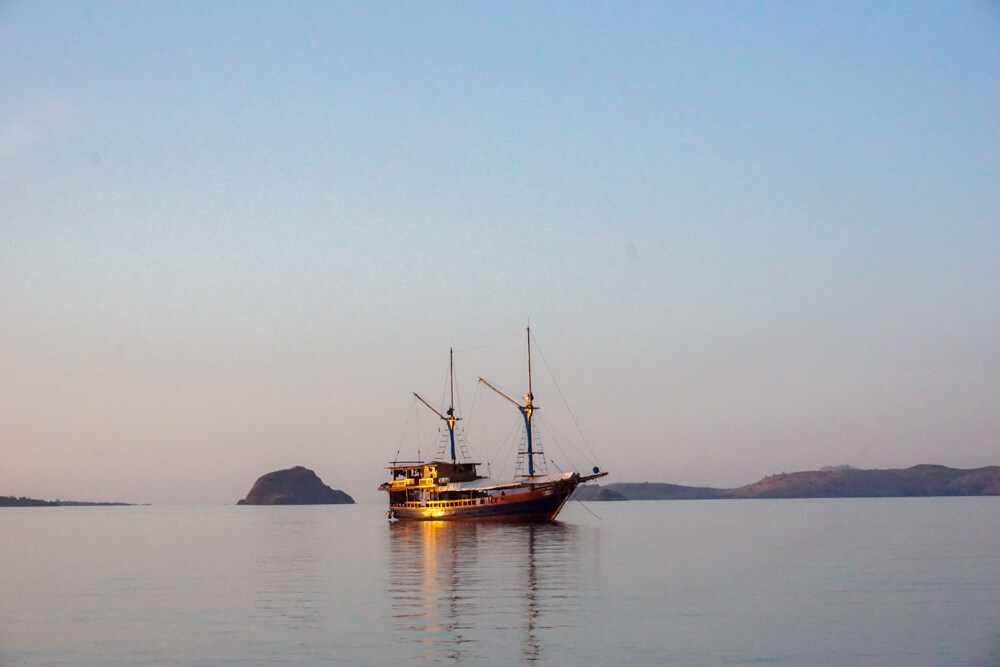
Conclusion
I look back on diving in Indonesia with the best memories! I hope I go back to Indonesia one day because there are so many areas to dive. Does anyone want to join me?
P.S. Want to read more posts about Indonesia? See them here.
Follow the adventures on Instagram, Facebook, Twitter, Pinterest, and Bloglovin’. You can also subscribe to the exclusive email list.

